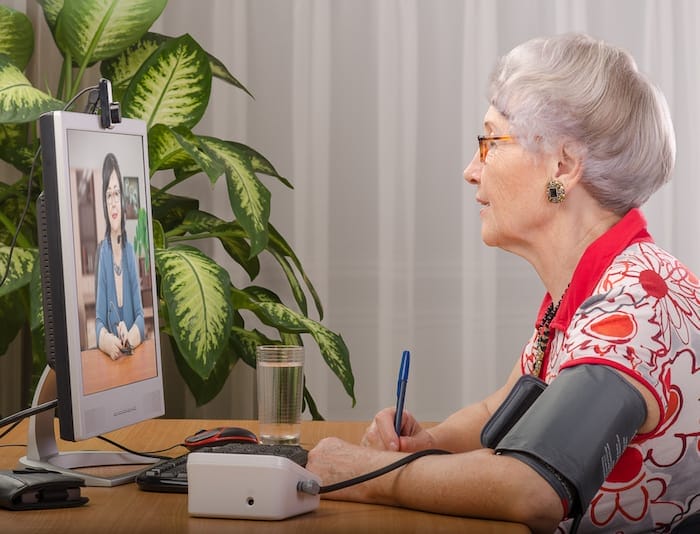Photo credit: Depositphotos
How consumerization and technology will drive change in big pharma.
By Noël Theodosiou and Sergio Corbo
The pharmaceutical industry has established a valuable and sustainable business model, successfully monetizing the development and commercialization of products. However, the risk of failure and its dire consequences have driven a conservative mindset, resulting in slowness to embrace technology, such as digital health and telemedicine solutions.
There are signs of innovation, however. Several pharmaceutical companies have invested in telemedicine to vertically integrate the care pathway, enabling an Amazon-like direct-to-consumer experience for patients in therapeutic areas that don’t necessarily require an in-person physical exam (such as sexual health, hair loss, and smoking cessation). This reflects a process of consumerization in healthcare slowly taking place over the last decade.
The technology industry has been a significant driver, much to the delight of patients. Between health trackers, wearables, apps, patient monitoring tools, and digital therapeutics, patients are welcoming the benefits that technology brings to healthcare. Access to their health data and information is empowering consumers and especially patients with chronic diseases who struggle with self-management, compliance, adherence, and persistency.
Coupled with innovations in digital health, telemedicine will ultimately enable the pharmaceutical industry to catch up to standards of customer experience, service, and convenience that have long been provided by other sectors. Given patients’ overwhelmingly positive experience with telemedicine (see “Consumer Sentiment About Telemedicine”), along with the need for lowered healthcare costs, improved access, and equity, it is only a matter of time before the needs of all stakeholders in the healthcare system align, and adoption takes hold.
This prospect, while exciting, sets up a potential culture clash. Telemedicine is driven by tech, an industry that innovates and changes quickly. Healthcare, specifically the pharmaceutical industry, is more conservative, dominated by compliance and regulation.
As technology and consumerization take hold in healthcare, how will pharmaceutical companies adapt?
Putting Money Where It Matters
COVID-19 has highlighted fundamental weaknesses in the US healthcare system that telemedicine can help address, from lowering costs to improving outcomes.
Relative to the size of its wealth, the US spends a disproportionate amount on healthcare. According to the Kaiser Family Foundation, in 2017, per capita expenditure on healthcare in the USA was $10,637, 28% higher than Switzerland, the next highest per capita spender (PPP adjusted).
A further breakdown shows two key areas in which the US spends significantly more than other, comparable countries: Inpatient and Outpatient Care which is 62% of per capita spend in the US versus 49% in comparable countries, and Administrative costs which make up 9% of per capita spend in the US versus 3.6% in comparable countries. The only category in which the US spends less than most comparable countries on a per capita basis is Long-term Care at 4.8% of per capita spend in the US versus 20% in comparable countries. Moreover, life expectancy at birth in the US (78.6 years) is lower than among comparable countries (82.3 years). Americans spend more and live less.
Clearly, the system can do better in terms of both costs and outcomes.
Pharmaceutical companies have long invested in programs to support patient access and outcomes. Medical information, patient assistance, and support programs facilitate prescriptions and fills, provide reimbursement support, address product and dosing information, and help drive compliance, adherence, and persistency. However, much of these efforts are product-focused.
The transition to a service and outcomes-oriented customer experience has yet to be fully embraced by the pharmaceutical industry. To realize this transformation, pharmaceutical companies must adopt and integrate technology to support data collection and analysis, and enable better connectivity between patients and healthcare providers. Combining telemedicine with remote monitoring and AI will facilitate personalized education and timely feedback from clinical support teams. This will lead to a reduction in hospital admissions and lengths of stay, as well as improved patient satisfaction and outcomes.
The shift in healthcare delivery from an office-centered, episodic visit model, to a real-time trigger and response model, will provide a better understanding of the role and effectiveness of pharmacology in treatment. As a result, treatment dynamics will change. Prescriptions, fill rates, lapses, and switches will adjust to this new reality and conform to a new pace and cadence.
Conclusion
Telemedicine is not just an alternative to office visits with healthcare providers. Coupled with other digital health tools, it has the potential to fundamentally change the paradigm of healthcare access and deliver an improved care experience. As therapeutic solutions, pharmaceutical products sit at the center of this change, and therefore, have an important role to play.
To ensure they are not left behind, pharmaceutical companies need to think like healthcare providers and behave like tech companies.
Noël Theodosiou is Principal & CEO of Luminous. Sergio Corbo is Principal & COO of Luminous. You can reach them at [email protected] and [email protected]
The Editorial Team at Healthcare Business Today is made up of skilled healthcare writers and experts, led by our managing editor, Daniel Casciato, who has over 25 years of experience in healthcare writing. Since 1998, we have produced compelling and informative content for numerous publications, establishing ourselves as a trusted resource for health and wellness information. We offer readers access to fresh health, medicine, science, and technology developments and the latest in patient news, emphasizing how these developments affect our lives.








